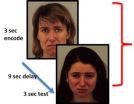(Press-News.org) Water tubing, a recreational activity in which participants ride an inner tube which is pulled behind a boat by a tow rope, has grown in popularity in recent years. Unfortunately, the number of injuries related to this activity has also increased.
According to a new study by researchers at the Center for Injury Research and Policy of The Research Institute at Nationwide Children's Hospital, the annual number of water tubing-related injuries increased 250 percent over the 19-year study period, rising from 2,068 injuries in 1991 to 7,216 injuries in 2009. Given that more than 83 percent of the injuries occurred during the summer months, this equates to more than 65 water tubing-related injuries being treated in U.S. emergency departments each day during the summer.
"Water-tubing can be a fun and exciting activity," said study co-author Lara McKenzie, PhD, principal investigator in the Center for Injury Research and Policy at Nationwide Children's Hospital. "However, the increasing number of injuries is concerning and result from a participant's position on the water tube, lack of directional control and velocity and the number of riders per water tube."
The study, available online and appearing in the February 2013 print issue of the Journal of Physical Activity & Health, found that the most frequently injured body parts were the head (27 percent) and the upper extremities (24 percent). The most common types of injuries were sprains and strains (27 percent) followed by soft tissue injuries (20 percent). Impact with the water (49 percent) and contact with another water-tubing participant (16 percent) were the most common mechanisms of injury.
The pattern of water tubing-related injuries did, however, vary by age group. Children and adolescents under 20 years of age were more likely to sustain head injuries and to be injured as the result of contact with another person. Adults, on the other hand, were more likely to injure their knees, sustain sprains or strains, and to be injured as a result of contact with the water. Researchers speculated that the higher number of head and collision injuries among children and adolescents may be the result of this age group trying to fit multiple riders on a single tube.
"Following basic safety guidelines such as sticking to the manufacture's recommendations for the number of riders per water tube, being responsible while riding the water tube and while operating the boat and always wearing a personal flotation device can help prevent water tubing-related injuries," said Dr. McKenzie, also a faculty member at The Ohio State University College of Medicine.
Analyzing factors such as the design of water tubes, the injury patterns and safety of some of the newer tubes, the design and effectiveness of helmets designed specifically for water-tubing, and the impact of the boat- and water tube-speed can help researchers further understand water tubing-related injuries.
Data for this study were obtained from the National Electronic Injury Surveillance System (NEISS), which is operated by the U.S. Consumer Product Safety Commission. The NEISS provides information on consumer product-related and sports and recreation-related injuries treated in hospital emergency departments across the country.
INFORMATION:
The Center for Injury Research and Policy (CIRP) of The Research Institute at Nationwide Children's Hospital works globally to reduce injury-related pediatric death and disabilities. With innovative research at its core, CIRP works to continually improve the scientific understanding of the epidemiology, biomechanics, prevention, acute treatment and rehabilitation of injuries. CIRP serves as a pioneer by translating cutting edge injury research into education, policy, and advances in clinical care. For related injury prevention materials or to learn more about CIRP, visit www.injurycenter.org.
For more information about the Center for Injury Research and Policy, visit http://www.nationwidechildrens.org/injury-research-and-policy
For more information about The Research Institute, visit http://www.nationwidechildrens.org/pediatric-research
For more information about Lara McKenzie, visit http://www.nationwidechildrens.org/lara-b-mckenzie
END
Our ability to learn and form new memories is fully dependent on the brain's ability to be plastic – that is to change and adapt according to new experiences and environments. A new study from the Montreal Neurological Institute – The Neuro, McGill University, reveals that DCC, the receptor for a crucial protein in the nervous system known as netrin, plays a key role in regulating the plasticity of nerve cell connections in the brain. The absence of DCC leads to the type of memory loss experienced by Dr. Brenda Milner's famous subject HM. Although HM's memory loss resulted ...
HEALTH – Neutron imaging breast cancer . . .
More precise optical imaging is vital for better diagnosis of breast cancer, which strikes one in eight women annually in the United States alone. Researchers at Oak Ridge National Laboratory and the University of Tennessee are using the neutron imaging beam line at ORNL's High Flux Isotope Reactor to evaluate neutron imaging as a powerful new tool for early detection. The study, led by Dr. Maria Cekanova of UT, working with imaging instrument scientist Hassina Bilheux, is using tissue from dogs treated at the UT College of ...
VIDEO:
A new discovery might lead to alpha particle therapy for different types of cancer in the near future.
Click here for more information.
COLUMBIA, Mo. ¬— We've all heard that "it's not wise to use a cannon to kill a mosquito." But what if you could focus the cannon's power to concentrate power into a tiny space? In a new study, University of Missouri researchers have demonstrated the ability to harness powerful radioactive particles and direct them toward small cancer ...
By broadly comparing the DNA of children to that of elderly people, gene researchers have identified gene variants that influence lifespan, either by raising disease risk or by providing protection from disease.
"This research is the first genome-wide, population-based study of copy number variations in children associated with human longevity," said study leader Hakon Hakonarson, M.D., Ph.D., director of the Center for Applied Genomics at The Children's Hospital of Philadelphia.
The study appeared Jan. 30 in the open-access journal PLOS ONE.
Copy number variations ...
New York City experienced a historic decline in crime rates during the 1990s, but it was not due to the implementation of CompStat or enhanced enforcement of misdemeanor offenses, according to an analysis by New York University sociologist David Greenberg. The study, which appears in the journal Justice Quarterly, did not find a link between arrests on misdemeanor charges and drops in felonies, such as homicides, robberies, and assaults. In addition, the analysis revealed no significant drop in violent or property crime attributable to the NYPD's introduction of CompStat ...
Gravity affects the ecology and evolution of every living organism. In plants, the general response to gravity is well known: their roots respond positively, growing down, into the soil, and their stems respond negatively, growing upward, to reach the sunlight. But how do plants sense gravity and how do they direct or signal their cells to grow in response to it? Although botanists understand a great deal about how this works, a recent article in the recent issue of the American Journal of Botany reviews what we know so far, from mechanical to genetic approaches; it reveals ...
CAMBRIDGE, MA -- A typical cancer cell has thousands of mutations scattered throughout its genome and hundreds of mutated genes. However, only a handful of those genes, known as drivers, are responsible for cancerous traits such as uncontrolled growth. Cancer biologists have largely ignored the other mutations, believing they had little or no impact on cancer progression.
But a new study from MIT, Harvard University, the Broad Institute and Brigham and Women's Hospital reveals, for the first time, that these so-called passenger mutations are not just along for the ride. ...
ANN ARBOR—Women in developed countries survive roughly 10 years longer after a breast cancer diagnosis compared to women in poor-to-middle-income countries, a new University of Michigan study suggests.
The report demonstrates the lack of access to good health care faced by women in poor countries, said the study's principal investigator Rajesh Balkrishnan, an associate professor at the U-M schools of Pharmacy and Public Health.
Early diagnosis and sustained treatment were the biggest hurdles and also the main indicators of patient survival, he said.
Balkrishnan and ...
VIDEO:
NIMH's Dr. Maura Furey talks about how a functional brain imaging measure may help predict a patient's response to a rapid-acting experimental antidepressant.
Click here for more information.
A telltale boost of activity at the back of the brain while processing emotional information predicted whether depressed patients would respond to an experimental rapid-acting antidepressant, a National Institutes of Health study has found.
"We have discovered a potential ...
Healthy eating not only promotes growth and development, but also provides important opportunities for children to socialize during meals. A new, comprehensive analysis of feeding behavior in children with autism spectrum disorders (ASD) indicates that these children are five times more likely to have a feeding problem, including extreme tantrums during meals, severe food selectivity and ritualistic mealtime behaviors.
Researchers at Marcus Autism Center and the Department of Pediatrics at Emory University School of Medicine conducted a comprehensive meta-analysis of ...


